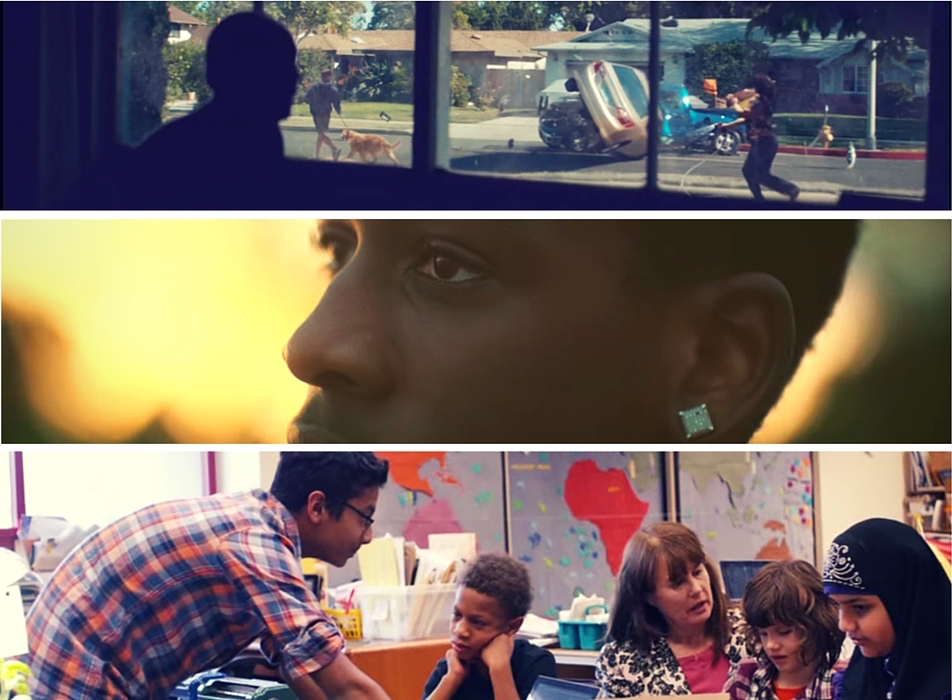Lately, a number of brands have announced partnerships with charitable organizations and it’s no wonder: Research abounds (e.g., this study) demonstrating that social good is important to consumers in general and millennials in particular.
In press releases, brands wax lyrical about the connection between their corporate ethos and the causes in question, whether it’s conservation, animal rights, or spiritual enlightenment. However, not every effort has been met with unbridled fan enthusiasm.
So, as corporate social responsibility becomes more of a must-have for brands, what can marketers do to ensure their charitable efforts ring true?
Per research from Cone Communications, a public relations and marketing agency with focus on corporate social responsibility, consumers have a natural propensity to switch brands to those associated with good causes – and interest in this area has only risen over the past 20 years. Further, Cone has found only 7 percent of Americans believe businesses exist to make money for shareholders and are not responsible for supporting social or environmental causes.
Not only do consumers expect companies to address these issues, they have more positive images of these companies and are more likely to trust them and be loyal to them, said Whitney Dailey, supervisor of CSR Insights and Intel at Cone.
In addition, millennials are even more likely to switch to brands tied to good causes and are more willing to do research and to take to social to learn about and engage around these brands as well, Dailey added.
“Millennials have grown up with cause marketing,” she said. “It’s almost a cost of doing business.”
Anne Fajon, a Boston-based corporate social responsibility professional, agrees.
“I think the primary reason for this is that millennials grew up in the information age, where the Internet and social media forced transparency – for better and for worse – for companies. Millennials came of age during the Enron scandal, and they now expect more from companies – they want to work for companies with a strong sense of ethics, that operate transparently and responsibly, act as a positive agent of change in their communities, and give back,” Fajon said. “They also realize that companies today have more tools at their disposal than ever to make a difference – they’re more global than ever, with fewer language barriers, more technology, and greater access to NGO and public private partnerships.”
Brands Doing Social Good
According to Cone, about 80 percent of Fortune 250 companies have a branded cause program and an average of three cause program announcements are made each day.
In other words, you really don’t have to look far for examples of brands doing charitable work.
The North Face
Take outdoor product company The North Face, for example. It recently announced a partnership to “protect, preserve and celebrate public lands” in support of the 21st Century Conservation Service Corps, or 21CSC, an organization that describes itself as “a bold national effort to put young Americans and veterans to work protecting, restoring and enhancing America’s great outdoors.”
The North Face says it is making a donation of $250,000 and launched a new campaign, featuring a recording of Woody Guthrie’s “This Land is Your Land” by My Morning Jacket, which is available to download from iTunes. According to a release, My Morning Jacket will donate its portion of the proceeds as well.
The spot debuted on YouTube on October 27 and has about 54,000 views as of November 11.
https://www.youtube.com/watch?v=tll-4WONtg0Based on a very unscientific review of the comments, most viewers seem happy with the effort and the ad itself, although there are some detractors that take issue with the branded aspect, such as the commenter that writes, “I doubt Woody himself would enjoy seeing one of his best works being used to sling overpriced gear to weekend warriors.”
“The North Face exists to inspire people to explore,” President Todd Spaletto said in a prepared statement. “If you can inspire people to love the outdoors, they will grow to care about their natural world, protecting and conserving the places that many of us know as our playgrounds. We are extremely proud to raise awareness, support the 21CSC and motivate people to reimagine exploration in their own lives.”
Harley-Davidson
And then there’s motorcycle manufacturer Harley-Davidson, which announced it was teaming up with environmental organization The Nature Conservancy and “mobilizing its global community of riders to raise funds to plant 50 million trees worldwide by 2025 as part of its Renew the Ride initiative.”
Per a release, Renew the Ride is “dedicated to the goal of preserving the open road for future generations of riders.”
The brand says it has committed to “contributing a series of annual grants totaling $550,000 in support of The Nature Conservancy’s global Plant a Billion Trees program,” a forest restoration initiative that has reforested more than 14,000 acres of land and planted and restored more than 14 million trees in Brazil’s Atlantic Rainforest since 2008. The focus has been to restore the world’s most critical forests with special focus in Brazil, the Yunnan and Sichuan provinces in China and throughout the U.S., the brand adds.
In addition, Harley said it planted 1,000 longleaf pine trees in South Quay, Virginia in October and the brand has committed to support the planting of an estimated 200 acres or 110,000 trees over the next few months.
Harley notes this is a good fit because approximately one-third of U.S. Harley owners already belong to or support a conservation organization.
“A central part of motorcycling is experiencing the great outdoors; to see the world from behind the handlebars is unlike anything else,” said Mark-Hans Richer, Harley’s chief marketing officer, in a release.
American Eagle Outfitters
What’s more, clothing and accessories retailer American Eagle Outfitters launched a clothing line for dogs and their owners, American Beagle Outfitters, which includes “an assortment of coordinating looks for the AEO guy, girl and now their dog,” in an effort that started out as a “fun April Fools’ Day prank dreamed up in the spirit of fundraising for the American Society for the Prevention of Cruelty to Animals,” per a press release.
Following the announcement of American Beagle Outfitters on March 24, 2014, the brand says it donated $100,000 to the ASPCA. However, it wasn’t immediately clear if American Eagle plans to make an additional donation as a result of actual sales from the dog clothing line.
A video announcing the line has more than 300,000 views as of November 11, but the blog post has no comments, making it difficult to gauge consumer sentiment.
Lululemon Athletica
 Also noteworthy is yoga clothing brand lululemon athletica inc., which partnered with the Dalai Lama Center for Peace + Education, saying it will work on “a variety of initiatives including researching the connection between mind-body-heart, sharing the work globally, and expanding the reach of the Center’s Heart-Mind education initiatives.”
Also noteworthy is yoga clothing brand lululemon athletica inc., which partnered with the Dalai Lama Center for Peace + Education, saying it will work on “a variety of initiatives including researching the connection between mind-body-heart, sharing the work globally, and expanding the reach of the Center’s Heart-Mind education initiatives.”
In addition, lululemon said it will contribute CAD $250,000 (or about USD $220,000) annually over the next three years to support the Dalai Lama Center’s work.
According to a press release, both organizations “share a common vision for developing the next generation of compassionate leaders in the world and are committed to engaging and empowering healthy communities” and the partnership will enable the brand and Center to “build the capacity for communities to promote mindfulness, or a non-judgmental awareness on the present moment, to foster heart-mind wellbeing in children and youth.”
But reaction was mixed on the Lululemon blog, with some fans voicing support of the partnership and others noting, “There are some things in this world which should remain non-brandeable [sic],” and, “While I do respect his beliefs and values, I don’t necessarily think they match yours. As he believes that luxuries are not necessities, you believe in $100 yoga pants.”
How Can Brands Support Good Causes?
So, given the research and handful of real-life examples, what lessons can brands glean about corporate social responsibility campaigns?
1. There Has To Be A Legit Tie Between The Brand And The Cause
Corporate social responsibility efforts can backfire when they’re misaligned with the brand and its business, or when a company is trying to make a big splash with a social impact campaign without addressing underlying reputational issues, Fajon said. That includes further examples like oilfield services company Baker Hughes and its pink drill bits benefiting Susan G. Komen, she said.
“We always stress with our clients that it’s a good thing to have an alignment between the brand and the impact effort,” Dailey adds. “I think specifically, on a superficial level, the alignment with the Dalai Lama Center makes sense given the fact that Lululemon sells yoga clothing, but there may have been an opportunity to address some criticism with their choice of partners.”
In other words, Daily suggests a “more strategic approach to philanthropy could have been helpful,” and that the brand might have been better served in aligning itself with a cause that supports women’s issues like self-esteem and empowerment.
Another example of a branded effort that backfired – coincidentally for breast cancer — is KFC’s Buckets for the Cure, which the quick-service chain launched during Breast Cancer Awareness Month in 2010.
“Consumers are sophisticated and kind of want to know what impact it will have on the issue and how the issue relates back to the brand,” Dailey adds.
2. Clearly Communicate The Details
Another thing Cone stresses is helping consumers understand their personal impact and the impact of the campaign as a whole, Dailey said.
“Making a donation is important, but being able to report back on how [the brand] moved the needle is extremely important,” Dailey adds, pointing to Target’s Feed campaign, which Dailey said was very clear on how many meals would be provided as a result of consumers buying certain products.
“That helps consumers understand, ‘If I purchase this product, this is the impact,’” Dailey said. “Consumers, again, as they become more sophisticated are looking for cues at point of purchase.”
In addition, she said the New York Attorney General came out with cause marketing guidelines, which are good best practices in terms of how brands can be transparent with their cause marketing efforts.
“Making it really clear how much money goes to the cause and how that money is used is very important,” Dailey said. “Saying, ‘We support X,’ isn’t going to cut it. They want to know, ‘If I buy this, how much am I contributing?’”
3. Report Back To Consumers What Exactly Was Achieved
Dailey points to Starbucks’ Create Jobs for USA campaign, which was very easy for consumers to understand as 100 percent of the purchase of a bracelet went to the Opportunity Finance Network, which helps provide opportunities that benefit low-income, low-wealth, and other disadvantaged communities across America.
At the campaign’s conclusion, Starbucks worked with the nonprofit to create a 20-page report that looked at its successes and failures and “how they moved the needle with public interest awareness and how many jobs were created,” Dailey said. “So that was a landmark moment in a company working with a nonprofit partner to create a feedback loop and report back on success.”
Other brands can simply communicate with consumers in other ways, such as a real-time ticker on a website or a collage with images of those impacted by the effort in question.
Do you have any additional tips on how brands can ace cause marketing campaigns?


